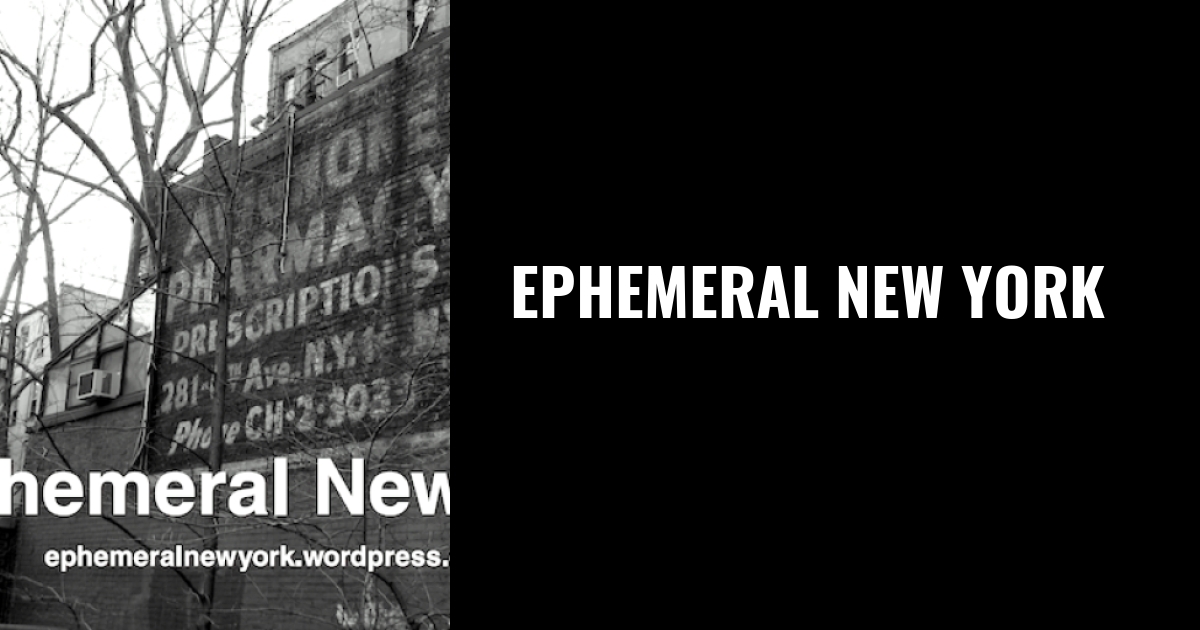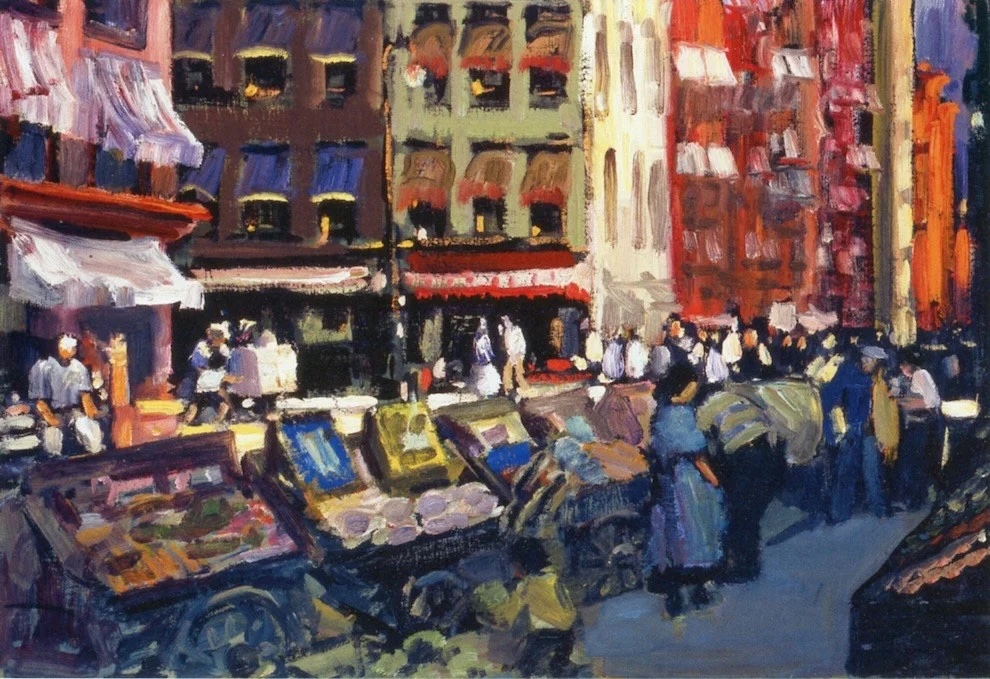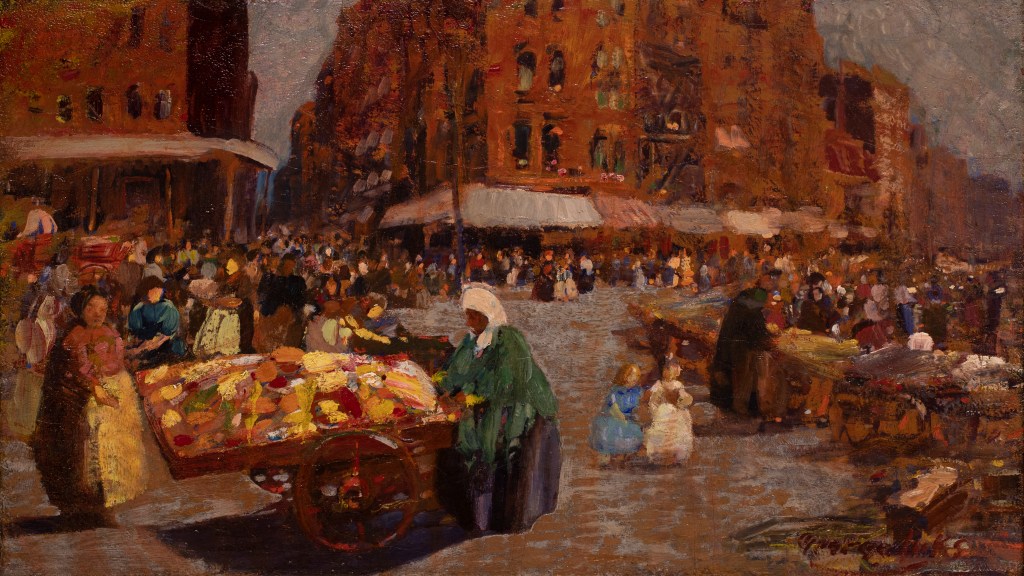When wooden pushcarts began appearing by the thousands along New York’s crowded downtown immigrant enclaves in the late 19th and early 20th centuries, these mobile marketplaces were viewed as “more than a nuisance,” as the New-York Tribune put it in 1906.
The Tribune cited the snarled traffic caused by throngs of rickety pushcarts, the questionable freshness of the foods some vendors sold, and the jockeying among “pushcart men” for city-issued licenses.
George Luks took a different view of pushcarts. As a member of a loose group of early 20th century artists dubbed the Ashcan School, Luks and his fellow social realist painters eschewed pretty landscapes and formal portraits, preferring to document the grittier side of the city.
In 1905, Luks painted the image at the top of this post, “Thompson and Bleecker Street.” At the time, this Greenwich Village corner had transitioned into an Italian immigrant neighborhood. Pushcarts run by fellow immigrants lined the slender streets, offering produce, fish, and other necessities for newcomers finding their footing in an unfamiliar city.
With Luks’ depiction of the pushcarts as the vital center of a robust outdoor market, “we see what made the Ashcan school both original and traditional,” wrote Robert A. Slayton in an article on the Ashcan School from Gotham Center for New York History.
“On the one hand, there is the style, the characteristic impressionist style, the dappled images,” says Slayton. “Yet the subject matter stands out; here this method is used to portray the congestion of a crowded immigrant shopping district, of women rummaging through pushcarts.”
“This, too, shows how the Ashcan artists reconceived the physical, how they endowed Gotham with beauty, reinventing old forms to fit a new setting. Thus, the great rebellion of the Ashcan school was in what its artists chose to draw, rather than in how they drew it.”
“Their hallmark was in making beautiful subjects no artists had deemed fitting before, urban landscapes and the working classes who dwelled within them,” Slayton concluded.
This isn’t Luks’ only depiction of pushcarts. The second image, “Houston Street,” dates to 1917 and finds beauty and vitality in a Bazaar-like scene other New Yorkers may have found repellent.
[First painting: Palmer Museum of Art; second painting: Saint Louis Art Museum]



